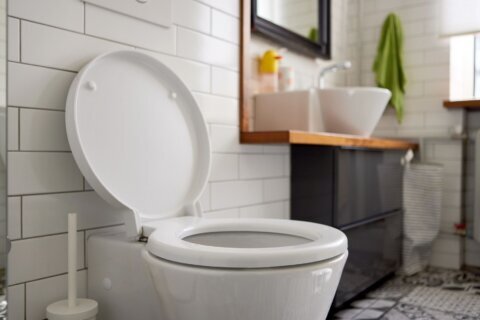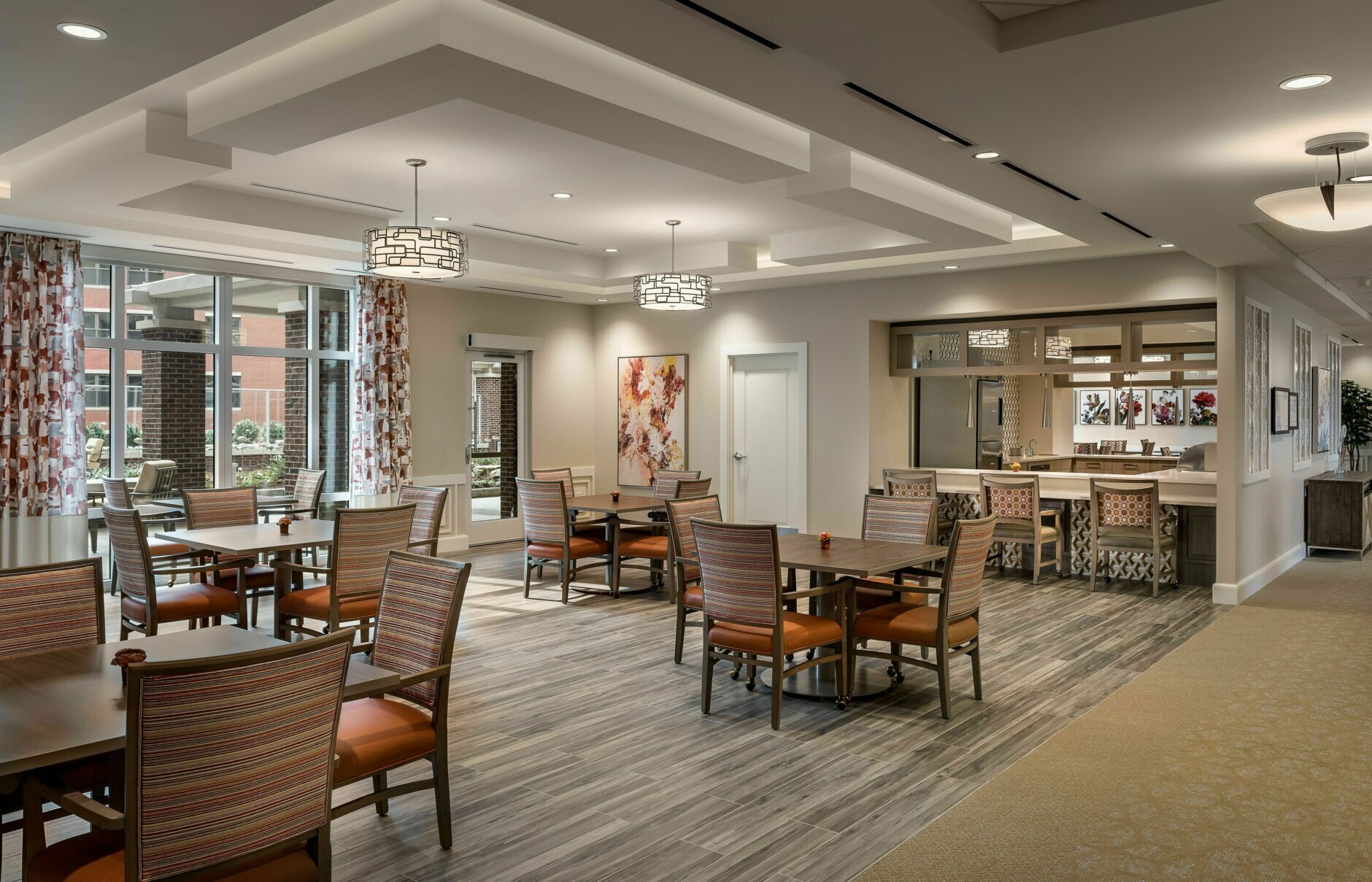
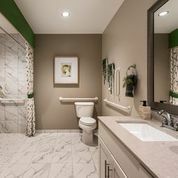
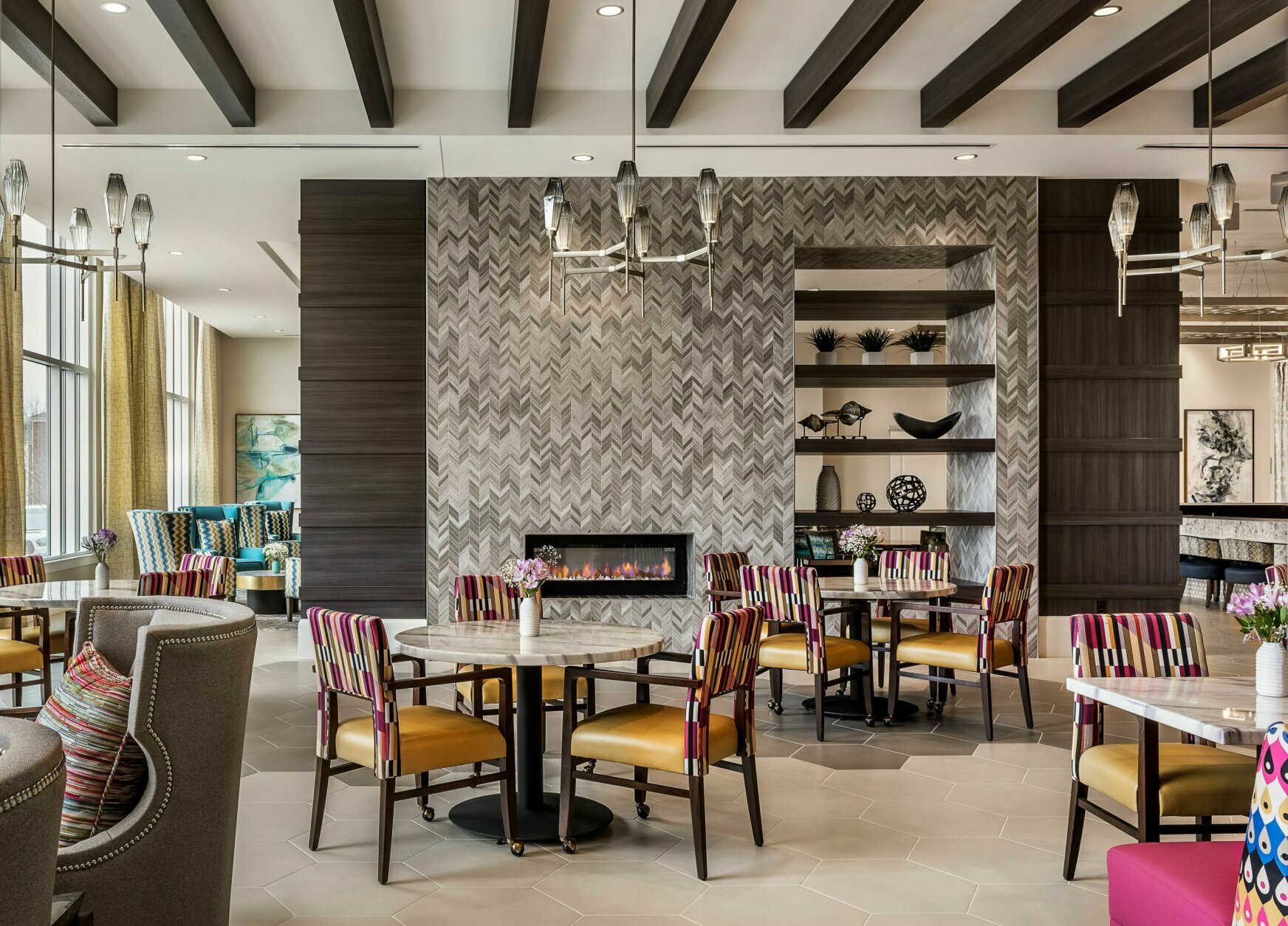
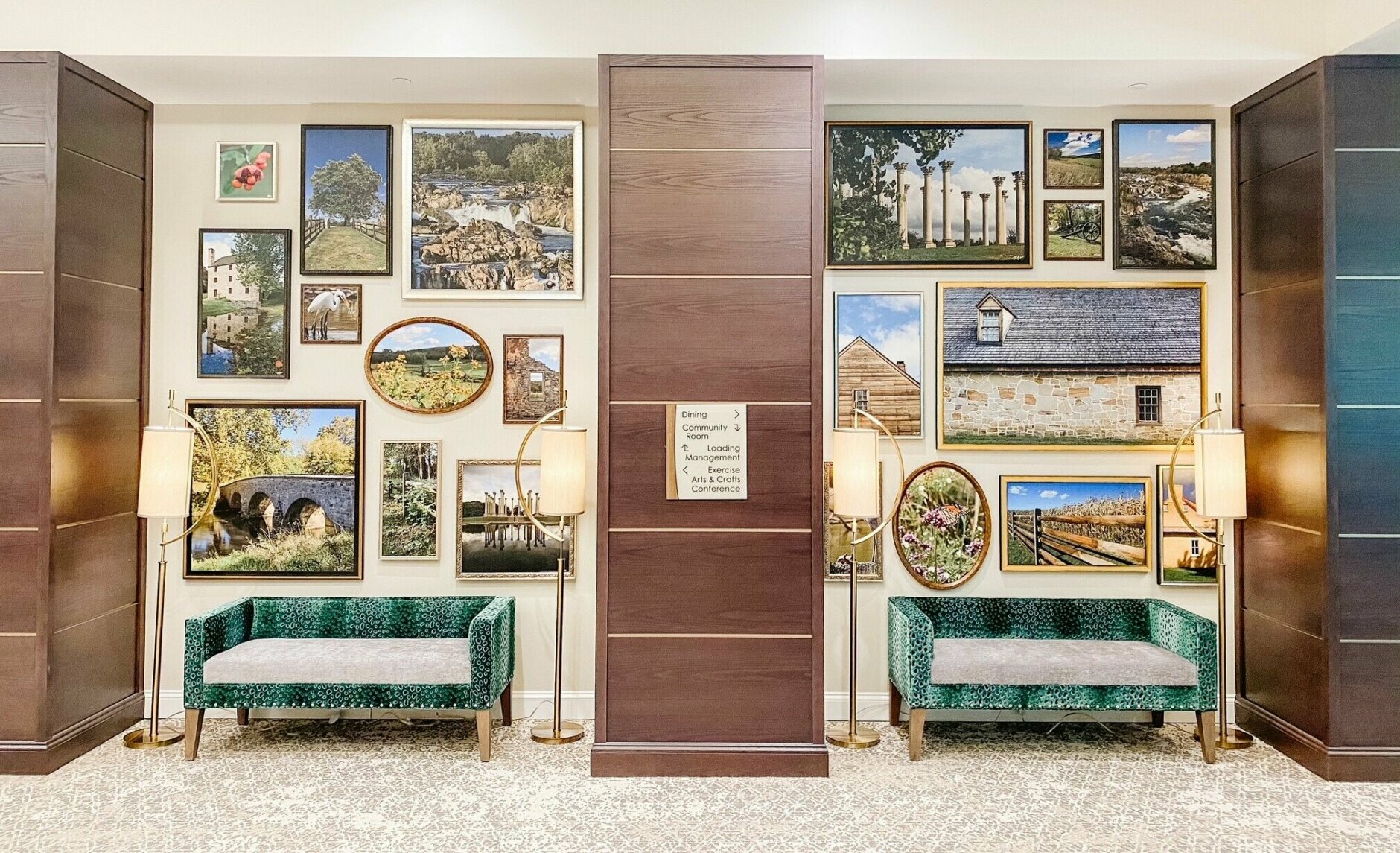




Caring for someone with Alzheimer’s disease or dementia can be challenging. But an interior designer specializing in senior living believes that how a home is set up can be helpful.
“Design is critical; your environment’s always critical to how you live and how you interact socially and physically and spiritually,” said LuAnn Thoma-Holec, who has a graduate degree in gerontology and owns Thoma-Holec Design.
She’s implementing her design philosophies in assisted living communities now open in Fairfax, Virginia, and Rockville, Maryland, and coming soon to Alexandria, Tysons, Reston and North Bethesda.
Her design philosophy also translates to home settings, and she said having familiar objects around from life events or children can be helpful.
“You might have a notebook full of photos that would trigger memories,” she said. “Anything that would help a person remember certain things or to find joy in those things.”
Design tricks can also improve safety for aging individuals or people losing muscle awareness or strength due to Alzheimer’s disease.
Because people, as they age, see color differently, can’t see depth as accurately and don’t have the same visual accuracy as when they’re younger, Thoma-Holec said contrasts need to be established.
“You want to make certain that your walls are contrasting with the floor, and that your seats on your chairs contrast with the floor,” she said. “By contrasting, you’re just helping to define that chair and define the difference between the floor and the wall, so that you don’t run into the wall and so that you accurately can sit on the chair and not essentially fall.”
Other basics include getting rid of tripping hazards, such as area rugs, and installing grab bars.
“The key is always to keep the person as independent as possible.”
Caregivers or people with Alzheimer’s and dementia can find information, support resources and ways to get involved on the Alzheimer’s Association website.



